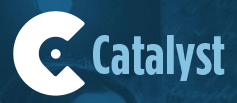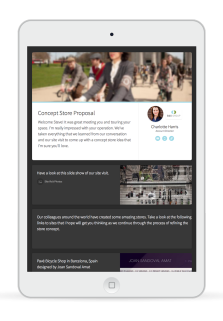 A Q&A with Catalyst founder and CEO Peter Simmons. The company’s site went live at the end of last month, and its location-based mobile social connections app launches today. The Durham, North Carolina-based startup was founded earlier this year.
A Q&A with Catalyst founder and CEO Peter Simmons. The company’s site went live at the end of last month, and its location-based mobile social connections app launches today. The Durham, North Carolina-based startup was founded earlier this year.
SUB: Please describe Catalyst and your primary innovation.
Simmons: Catalyst is the social network that goes out with you. Catalyst is a mobile application that facilitates and enhances real-life social interactions between users by focusing on check-in location to help people connect—providing users a safer way to meet potential matches at their current location, and also helping users to meet up with friends during a night on the town.
SUB: Who are your target markets and users?
Simmons: Catalyst has a variety of target users, having something to offer for a broad range of users. Our current emphasis is on introducing Catalyst to users between the ages of 18-to-25 to be Catalyst’s initial adopters. While our current feature set is more appealing for single users looking to meet potential matches, Catalyst also provides beneficial features for users not in the market for finding relationships or hookups. We fully expect our target market to broaden as we continue to perfect Catalyst and expand outside of the dating realm to foster connections in various other contexts, truly embracing our tagline—‘the social network that goes out with you.’
SUB: Who do you consider to be your competition, and what differentiates Catalyst from the competition?
Simmons: Although there is no mobile application doing exactly what we do, we do often hear people compare Catalyst to Tinder, Twine, Swoon, etc., primarily because these apps all focus on establishing matches based on users anonymously and mutually liking one another.
We differentiate ourselves from these other offerings in several key ways. First, unlike all other dating apps that employ users’ ‘radial,’ or general, location, Catalyst focuses on users’ precise, check-in location. By focusing on a user’s check-in location in determining who you check out, Catalyst provides numerous benefits not found in our competitors’ services. To begin with, we allow the user to stay in the driver’s seat. Catalyst puts an end to the randomly-generated lists and formulaic recommendations so heavily relied on by other dating apps and services. Ultimately, there’s no algorithm that can tell you, the user, who it is that you like and with whom you want to establish a connection. Catalyst is the first app to put ‘chemistry’ at your fingertips. Additionally, by focusing on your check-in location, Catalyst restores the idea of serendipitous connections and dating. Whether it’s on your daily grind of going to the coffee shop, work or class, and the gym, or a night out on the town at a bar, club, or house party, Catalyst immediately connects you with everyone at your current location. There are possible connections at all of these locations that go unnoticed because we fear rejection or we are uncertain of the social protocols of engaging an attractive stranger. With Catalyst, the days of ‘woulda, shoulda, coulda’ in making social connections are no more—users now feel completely comfortable anonymously expressing their interest in a potential match without any fear of rejection or concern about the proper social etiquette of making the connection.
Also, by utilizing check-in location, Catalyst eliminates the need for awkward and uncomfortable ‘blind dates’ between matches. Because other apps use a radial location, matches are forced to set up a meeting time and place, which often proves too onerous and discourages matches from meeting in person, offline. The beauty of Catalyst is that users are only making connections with others at their current location, thus, it is extremely convenient for matches to break the ice online and meet face-to-face shortly thereafter, offline. Finally, by focusing on check-in location, Catalyst maintains the social norms of communication and prevents the lewd messages users of other dating apps receive. Because other dating services focus on general location, users continue to exist in a ‘virtual comfort zone,’ free of many of the social norms that guide our interactions—allowing users to abuse this aspect and send obscene and overtly sexual messages. However, with Catalyst, because users are in the same location, they’re more inclined to have the same conversations within the app that they would engage in face-to-face. Ultimately, we like to think of Catalyst as ‘Tinder with social skills.’
Second, Catalyst differentiates itself with our unique take on the profile picture. Catalyst presents a dynamic portrait of individual users by encouraging them to take a ‘selfie’ every 24 hours—allowing users to display the most accurate representation of themselves at that given time. The daily picture serves as the user’s Catalyst profile and becomes a part of a broader social photo journal. This is a huge differentiator from other dating and social networking apps because Catalyst users can avoid the fake or outdated profiles often encountered on these other apps.
Third, unlike Tinder, Twine, Swoon, etc., Catalyst’s focus isn’t solely on the dating realm. Catalyst is also an excellent way to help users meet up with friends when they’re out on the town. The app includes a ‘Friend Feed’ feature that lets users know where their friends are when they check in at local places, displaying locations on a map. It’s a great way to coordinate nights out with different groups of friends, providing an at-a-glance status that can help users choose their next destination based on who is hanging out where.
SUB: You just launched to the public. Why was this the right time to launch?
Simmons: The dating scene and the way our generation connects with people has become a huge concern for me. Between dating and social networking apps, users are so focused on being online through these social media and dating sites and apps, rather than being offline and really experiencing that event, that venue, or that person. These types of apps, especially in the dating sphere, are becoming more numerous by the day as users become more-and-more reliant upon apps and online services for connecting with people. I have an issue with our generation’s inability to connect with one another in the real-and-present. I saw an opportunity to use the source of the problem—phones and social media—to help create a solution by fostering connections through mobile devices to encourage people to socialize in the real world. The reality of our generation is that we are more comfortable existing behind a screen. Catalyst is the bridge connecting this virtual comfort zone with our real world social interactions. Unlike other social networking and dating apps, what we’re all about is you going online with Catalyst, in hopes of you eventually going offline to really enjoy that experience and that connection that you made through Catalyst.
SUB: What was the inspiration behind the idea for Catalyst? Was there an ‘aha’ moment, or was the idea more gradual in developing?
Simmons: The inspiration behind the idea for Catalyst was more of a gradual realization spurred by an ‘aha’ moment. This ‘aha’ moment, which motivated the initial inspiration behind Catalyst, came as a result of how I met my fiancée. It was a St. Patrick’s Day four years ago when she came up to me in a bar and asserted: “You don’t look like you’re from around here.” Upon this astute observation, we began talking, and I knew right then and there she was a keeper. Unfortunately for me, I left the bar knowing nothing more than her first name. Without her last name, Facebook friending was out of the question. Without her phone number, texting or calling wasn’t an option. So, how would I ever contact her again? Well, luck was on my side as it was the height of the Blackberry era and she had scanned my BBM barcode.
From this fortuitous interaction, the two driving forces behind Catalyst were born. The first being the need for a means of exchanging peripheral information to allow people to stay in touch with one another without divulging the gamut of personal information currently available on many social networks. The second, as a result of me realizing how thankful I am that she muttered that cliché pickup-line to me, is that initiating connections and communications needs to be easier and less intimidating.
SUB: What were the first steps you took in establishing the company?
Simmons: I definitely took the path less traveled with the first steps in establishing Catalyst. Before there was a name, a business plan, or even a polished concept, I made sure to secure the trademark for ‘the social network that goes out with you.’ At the time, I had only a general idea of what I wanted the app to be, but I knew that this slogan was the perfect illustration of what I eventually hoped to accomplish. As the logistics of the initial concept came to light, concentrating on this credo really kept us focused on the bigger picture throughout the development of Catalyst. Because securing this trademark was the first step I took in establishing the company, I think it has a certain sentimental value for me. Whereas most companies develop their idea and their product and eventually stumble upon an appropriate slogan, I think Catalyst benefitted from having a meaningful slogan in place to guide us in perfecting the development of both our idea and product. Instead of developing an app and saying this is the problem we hope to solve, we said: “Here’s the solution to the problem we hope to solve, now let’s develop an app based on that solution.”
SUB: How did you come up with the name? What is the story or meaning behind it?
Simmons: In college, I always had a rotation of five-to-ten words that seemed to find their way into every term paper; fortunately, ‘Catalyst’ was one of them. In brainstorming the name for our app, as soon as Catalyst came to mind it just clicked. Catalyst is more than just a chemistry term; it’s about helping you find chemistry and catalyze new friendships, relationships, and hookups. Beyond these obvious chemistry connotations in the dating realm, the name, ‘Catalyst’ fits perfectly with our ‘the social network that goes out with you’ tagline. Catalyst isn’t just about finding chemistry in relationships and hookups, it can also be catalyzing a fun night out with your friends or catalyzing a new friendship. Ultimately, it’s all about real people, real connections—we’re just the Catalyst.
SUB: Have you raised outside funding to this point?
Simmons: Yes, we were very fortunate to have raised a comfortable amount of Seed capital. Beyond that, our efforts have been focused solely on developing the most aesthetically-pleasing and functionally sound app possible. With the app set to launch, we are looking forward to having the opportunity to secure additional outside funding as we have an abundance of extremely exciting and innovative concepts and features that we look forward to implementing.
SUB: What have the most significant challenges been so far to building the company?
Simmons: I think the most significant challenge has been the amount of uncertainty inherent in launching a mobile application. You have an idea of how long development is going to take, but that’s a very rough estimate because you don’t really know all the ins-and-outs of the app until the process begins. So, the time aspect is one level of uncertainty. Beyond that, there’s the uncertainty of whether someone is going to come out with a similar idea before you get to launch. That thought has caused many sleepless nights. Additionally, there’s the uncertainty of user adoption. [With] an idea like Catalyst, while everyone can revel in what a great concept it is, the truth is that Catalyst is only as strong as its user base.
SUB: How do you generate revenue or plan to generate revenue?
Simmons: Right now, our focus is not on revenue generation, but instead on providing the best user experience possible. That being said, generating revenue is not something we’re going to struggle with in the future. In developing and launching Catalyst, one of the hardest things has been really concentrating on delivering a simple, functional product. You can’t overwhelm users with features, instead, you have to focus on those core features that solve the initial problem you set out to solve. From there, that’s where it gets fun for me as the founder and CEO. We have all of these ideas and additional features—it really just depends on what our users want out of Catalyst, and that’s going to be our primary focus with future updates. I can’t get into the specifics, but the future is going to even more strongly embody ‘the social network that goes out with you’—providing users with services that enhance and simplify their social experiences with a built-in revenue generating structure. We firmly believe that generating revenue should never detract from the user experience or be forced upon the users. Instead, the revenue generation should come as a second thought, precipitating from the inclusion of a new feature with the primary goal of enhancing the user experience.
SUB: What are your goals for Catalyst over the next year or so?
Simmons: Users. Users. Users. We need as many users as possible as quickly as possible. Ultimately, we hope to attract these users by solving the problem we set out to solve, by putting the social back in social networking. No more virtual bubble of artificial interactions. We want Catalyst to be the real you in real time interacting with the real world.
Catalyst – www.thecatalystapp.com












